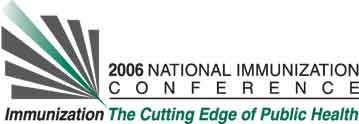Julie C. Lai
1,
James W. Sweeney2, C. Victor Spain
3, and Abbey Mahady
2. (1) Department of Epidemiology and Biostatistics, Drexel University School of Public Health, 245 N. 15th Street, Mail Stop 660, Philadelphia, PA, USA, (2) Division of Disease Control/ Immunization Program, Philadelphia Department of Public Health, 500 South Broad Street, 2nd Floor, Philadelphia, PA, USA, (3) Division of Disease Control/Immunization Program, Philadelphia Department of Public Health (PDPH), 500 South Broad Street, 2nd Floor, Philadelphia, PA, USA
Learning Objectives for this Presentation:
By the end of the presentation participants will be able to:
1. Gain knowledge of what type of mailing notification are most successful in patient recruitment
2. Learn the effectiveness of specifying time slots in the notification for determining when patients arrive
Background:
Public-health officials need to be able to identify effective mechanisms for informing adults about available vaccination clinics.
Objectives:
To assess the effectiveness of 2 forms of mailing notifications (postcards or letters) for patient recruitment for a community-based mass vaccination site held October 2005.
Methods:
We selected 6424 patients who were age 65 years or older and had previously received the influenza vaccine at a nearby Philadelphia Community Health Center. Of these patients, 2550 were mailed postcards notifying them of the event, 2550 were mailed personalized letters notifying them of the event and providing information regarding the importance of getting vaccinated, and 1324 individuals were not mailed any information but may have learned of the event through local media. Among the cohorts receiving a postcard or letter, equal numbers of patients were specified to arrive at 10 am, 11am, or 12 pm. All relevant information was gathered for patients that attended the event through self-administered forms. Descriptive statistics and bivariate analysis were conducted in evaluating the results.
Results:
A total of 1670 people attended the event. Preliminary results suggest that those receiving personalized letters were 1.3 times as likely to attend in comparison to the control group. Preliminary analysis also illustrates that specifying time slots in the postcards and letters did not dictate when individuals actually arrived.
Conclusions:
Identification of efficient and effective methods of notifying adult populations of flu vaccination events has not been widely researched. We found that using personalized letter notifications is successful in increasing attendance by 30%. However, further analysis needs to be conducted in determining its cost-effectiveness.
See more of Posters
See more of The 40th National Immunization Conference (NIC)

